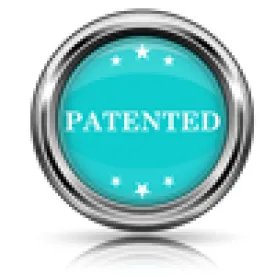Takeaway: When a Petition argues that one of ordinary skill in the art would have looked to a second reference to improve the performance of a specific feature of a device disclosed in a first reference, the Petition should identify where the first reference teaches the use of that feature. If there is no evidence that the first reference includes the feature, then there is no reason to look to the second reference to improve its performance.
In its Final Written Decision, the Board determined that Petitioner showed by a preponderance of the evidence that all instituted claims (claims 1, 2, 5-8, and 10) of U.S. Patent No. 8,359,007 are unpatentable. The ’007 patent relates to a content delivery system in which “a user may interact with the Internet to select information, such as audio information, and wirelessly communicate the selected information to an electronic device.”
The Board began with claim construction, interpreting claim terms according to their broadest reasonable construction in light of the patent’s specification. The terms “portions of an available media” and “cellular phone” were construed in the Decision on Institution, and the Board’s constructions, which were not challenged by either party, were maintained in the Final Written Decision.
The Board then considered the proposed grounds of unpatentability.
First, Petitioner argued, and the Board was persuaded, that all instituted claims would have been obvious over Treyz and Fuller. Patent Owner argued that “the device of Treyz is not a ‘cellular telephone’ and the proposed combination of Treyz and Fuller would have been ‘impossible.’” The Board concluded that a passage disclosing a “land-line” connection in Treyz was only an example of a device incorporating telephone capabilities and “does not clearly and unambiguously limit all telephone embodiments in Treyz to the use of a land-line connection” and other portions of the specification state that the device “may communicate via ‘cellular telephone transmissions.’” Patent Owner also argued that Treyz did not suggest a device that is capable of placing telephone calls in which a conversation could be conducted and that it is not a “cellular telephone” because “it is not portable, such that it could be ‘used over a wide area’ while being ‘moved around.’” The Board rejected each of these arguments. Also, with respect to the impossibility argument, Patent Owner argued that “because Fuller only describes switching transmission rates using a Java applet, one of ordinary skill in the art would understand the scope of Fuller’s disclosure to be limited to this specific switching mechanism, which Patent Owner contends would have been impossible to implement in Treyz.” The Board, however, credited Petitioner’s expert’s “testimony that one of ordinary skill in the art would have sought to use, and would have had a reasonable expectation of success in implementing, Fuller’s idea of transmission rate switching in Treyz.”
Second, the Board considered Petitioner’s argument that all instituted claims are unpatentable as obvious over Hitson and Fuller. Petitioner contended “that one of ordinary skill would have sought to incorporate Fuller’s disclosure of varying the transmission rate between first and second portions of an available media in the device of Hitson in order to avoid having the input buffer run out of data, resulting in a ‘substantial and perceivable quality degradation.’” However, the Board concluded that Petitioner did not provide any evidence “to establish that Hitson actually uses an input buffer” and that, “[a]bsent evidence of an input buffer in Hitson, it is not evident from the Petition why one of ordinary skill in the art would have sought to modify Hitson to incorporate Fuller’s method of transmission rate switching.” Accordingly, the Board was not persuaded that the instituted claims would have been obvious over Hitson and Fuller.
The Board then considered the parties’ motions to exclude.
Patent Owner moved to exclude twenty-seven exhibits relied upon in Petitioner’s Reply, which Patent Owner contended was “new evidence that is being used improperly to support its case-in-chief.” Petitioner argued that the evidence submitted with its Reply was “appropriate to rebut Patent Owner’s arguments, as well as the testimony of [Patent Owner’s witness].” The Board denied Patent Owner’s Motion to Exclude because Patent Owner did not assert that any of the evidence relied upon in the Reply is inadmissible under the Federal Rules of Evidence. However, citing the Office Patent Trial Practice Guide, 77 Fed. Reg. 48756, 48767 (Aug. 14, 2012), the Board stated that “a reply may ‘only respond to arguments raised in the corresponding opposition’ and may not add new evidence necessary to make out its case-in-chief of unpatentability of a claim.” Accordingly, “to the extent that Petitioner’s Reply evidence does not respond to specific arguments or evidence presented in the Patent Owner Response, or seeks to establish an element necessary to make out its case-in-chief,” the Board did not consider such evidence.
Petitioner moved to exclude certain of Patent Owner’s expert’s opinions as lacking sufficient basis under Federal Rule of Evidence 702. However, Petitioner also submitted that it generally is better for the Board to have the complete record before it instead of risking improper exclusion and that the Board “is well-positioned to determine and assign the appropriate weight to be accorded to the evidence . . . without the need for formal exclusion.” The Board agreed with Petitioner that “the Board, sitting as a non-jury tribunal, is well-positioned to assign appropriate weight to the evidence without the need for formal exclusion.” It also determined that it “need not reach the merits of Petitioner’s Motion to Exclude because, having considered [the challenged] testimony, [the Board] decided the issue in Petitioner’s favor.” Accordingly, Petitioner’s Motion to Exclude was dismissed as moot.
Samsung Electronics Co., Ltd. v. Affinity Labs of Texas, LLC, IPR2014-00407 Paper 48: Final Written Decision
Dated: July 20, 2015
Patent: 8,359,007 B2
Before: Kevin F. Turner, Lynne E. Pettigrew, and Jon B. Tornquist
Written by: Tornquist
Related Proceedings: Affinity Labs of Texas, LLC v. Samsung Electronics Co., No. 1:12-cv-557 (E.D.Tex.); IPR2014-00408



 />i
/>i
